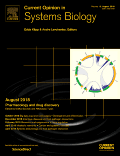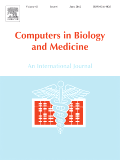
PLoS Computational Biology
Scope & Guideline
Empowering Research with Open-Access Solutions
Introduction
Aims and Scopes
- Computational Modeling of Biological Systems:
The journal emphasizes the creation and analysis of computational models that simulate biological processes at various scales, from molecular interactions to ecological dynamics. - Data Integration and Analysis:
Research often involves the integration of diverse biological data types, including genomic, transcriptomic, and proteomic data, to derive meaningful insights into biological mechanisms. - Machine Learning and AI Applications:
A significant focus is on the application of machine learning and artificial intelligence techniques to predict biological outcomes, analyze large datasets, and enhance the understanding of complex biological systems. - Epidemiological Modeling:
The journal includes studies that utilize computational models to understand and predict the dynamics of infectious diseases, assess public health interventions, and inform policy decisions. - Biophysical and Structural Biology:
Research often involves exploring the structural dynamics of proteins and other biomolecules, leveraging computational tools to investigate their functions and interactions. - Systems Biology and Synthetic Biology:
The journal promotes research that integrates computational models with experimental data to explore systems-level properties of biological networks and synthetic biological systems.
Trending and Emerging
- Integration of Multi-Omics Data:
There is a growing trend towards integrating multiple types of omics data (genomics, transcriptomics, proteomics) to provide a more comprehensive understanding of biological systems. - Artificial Intelligence and Deep Learning:
The application of AI and deep learning techniques is on the rise, with researchers employing these methods for predictive modeling, classification tasks, and enhancing the analysis of complex datasets. - Epidemic Modeling and Public Health Research:
In light of the COVID-19 pandemic, there has been a significant increase in publications focused on epidemic modeling, exploring the dynamics of infectious diseases and the effectiveness of public health interventions. - Complex Systems and Network Dynamics:
Research is increasingly exploring the dynamics of complex biological networks, focusing on how interactions between components lead to emergent behaviors and robustness. - Personalized Medicine and Drug Discovery:
There is a notable trend towards using computational models to inform personalized medicine approaches, including predicting drug responses based on individual genetic and phenotypic data. - Ethics and Open Science Practices:
Emerging discussions around ethics in computational biology and the importance of reproducibility and transparency in research are becoming more prominent, reflecting a broader cultural shift in science.
Declining or Waning
- Traditional Statistical Methods in Systems Biology:
As computational power increases and machine learning methods gain traction, traditional statistical methods may be used less frequently in favor of more sophisticated algorithms. - Basic Mechanistic Modeling:
There seems to be a reduction in studies that focus solely on basic mechanistic modeling without integrating more complex, emergent properties or machine learning approaches. - Single-Cell RNA Sequencing Analysis:
While still a vital area, the frequency of publications specifically dedicated to single-cell RNA sequencing analysis has decreased as the field matures and integrates more with broader multi-omics approaches. - Static Network Models:
The reliance on static models for network analysis is diminishing as researchers increasingly adopt dynamic, time-varying models that better capture biological realities.
Similar Journals

Current Opinion in Systems Biology
Unraveling complexity through innovative research and insights.Current Opinion in Systems Biology is an esteemed academic journal published by ELSEVIER, focusing on the dynamic and interdisciplinary field of systems biology. Since its inception in 2017, the journal has made significant strides in disseminating cutting-edge research and innovative perspectives across various domains, including applied mathematics, biochemistry, and drug discovery. With an impressive impact factor reflecting its prominent position as a Q1 journal in multiple categories—including Applied Mathematics, Biochemistry, and Computer Science Applications—it serves as a vital resource for researchers, professionals, and students alike. The journal embraces a comprehensive approach to understanding complex biological systems, fostering a deeper insight into the interactions within biological and computational frameworks. This makes it an essential conduit for advancing knowledge and innovation in systems biology, facilitating the development of new methodologies that could lead to groundbreaking discoveries.

Interdisciplinary Sciences-Computational Life Sciences
Advancing Life Sciences Through Computational InnovationInterdisciplinary Sciences-Computational Life Sciences, published by SPRINGER HEIDELBERG, is a premier journal dedicated to advancing the field of life sciences through the lens of computational methods. With an ISSN of 1913-2751 and an E-ISSN of 1867-1462, this journal serves as a significant platform for researchers and professionals alike, fostering innovation and collaboration across various disciplines. As a testament to its impact, the journal holds a Q2 category status in Biochemistry, Genetics and Molecular Biology, Computer Science Applications, and Health Informatics, reflecting its influential contributions and rigorous peer-review process. The Scopus rankings demonstrate its esteemed placement within its fields, with notable percentiles that highlight its relevance and reach. While the journal operates under a traditional access model, its commitment to publishing high-quality research continues to stimulate important discussions and developments within the scientific community. Founded in 2009 and converging through 2024, Interdisciplinary Sciences-Computational Life Sciences remains an essential resource for the latest discoveries at the intersection of computation and life sciences, appealing to both seasoned researchers and enthusiastic students eager to contribute to this dynamic field.

CELLULAR AND MOLECULAR BIOLOGY
Transforming Knowledge in Cellular and Molecular BiologyCellular and Molecular Biology is a prominent academic journal published by C M B ASSOC, specializing in the dynamic fields of cellular and molecular biology. Established in 1977, this journal has consistently aimed to disseminate groundbreaking research that contributes to our understanding of biochemical processes, cell dynamics, and molecular mechanisms governing life. With its ISSN 0145-5680 and E-ISSN 1165-158X, the journal plays a vital role in the exchange of innovative ideas, evidenced by its coverage of research from 1977 to 2024. Although currently categorized in the Q4 quartile for major disciplines such as Biochemistry and Cell Biology, it is dedicated to fostering the development of the field by welcoming submissions that challenge the conventional understanding and lead to novel insights. Researchers and academics looking to contribute to or stay updated in the rapidly evolving landscape of molecular biology will find this journal a valuable resource for connecting with a global community of scientists.

Frontiers in Bioinformatics
Exploring New Frontiers in Computational ScienceFrontiers in Bioinformatics is a leading academic journal dedicated to advancing the field of bioinformatics by publishing high-quality research and review articles. Published by FRONTIERS MEDIA SA, this open-access journal aims to foster innovative research, promote collaborative initiatives, and provide a platform for the dissemination of findings related to computational biology, biostatistics, and the intersection of bioinformatics with other biological disciplines. With a focus on promoting accessibility and visibility of research, Frontiers in Bioinformatics operates under a rigorous peer-review process, ensuring that all published content meets the highest academic standards. The journal has shown a commendable rank across various Scopus categories, including Mathematics, Computational Mathematics, and multiple dimensions of Biochemistry and Molecular Biology, indicating its relevance and impact within the research community. Researchers, professionals, and students will find this journal invaluable for staying abreast of the latest developments and breakthroughs in bioinformatics, enhancing their studies and professional projects.

BIOSYSTEMS
Fostering collaboration across disciplines to tackle biological challenges.BIOSYSTEMS is a prestigious academic journal published by Elsevier Science Ltd, dedicated to the interdisciplinary fields of applied mathematics, biochemistry, genetics, molecular biology, medicine, modeling and simulation, and statistics and probability. Established in 1967, this journal has carved a niche in presenting innovative research that bridges theoretical and practical aspects of biological systems, making it essential reading for researchers, professionals, and students alike. With a robust impact factor and a Q3 category ranking across various fields, BIOSYSTEMS is recognized for its contributions to advancing scientific knowledge and fostering collaborations among disciplines. The journal's rigorous peer-review process ensures high-quality and impactful articles that address complex biological challenges through quantitative and qualitative methods. As a vital resource for the academic community, BIOSYSTEMS invites submissions that enhance understanding of biosystem processes, enabling readers to stay at the forefront of research trends and applications.

AIMS Biophysics
Unlocking the secrets of complex biological systems.AIMS Biophysics, published by the American Institute of Mathematical Sciences (AIMS), is an esteemed open-access journal dedicated to advancing the fields of biophysics, biochemistry, molecular biology, and structural biology. Launched in 2014, this journal provides a platform for researchers and professionals to disseminate high-quality research findings that contribute to the understanding of complex biological systems at the molecular level. With an ISSN of 2377-9098, AIMS Biophysics is indexed in Scopus, where it ranks in the fourth quartile across several categories, reflecting its commitment to addressing important issues within the scientific community. The journal aims to foster interdisciplinary collaboration and innovation through the publication of original research, reviews, and methodologies that advance the field. The open-access model ensures that cutting-edge research is freely available, promoting global access to scientific knowledge and enhancing visibility for authors. Nestled in the vibrant scientific landscape of the United States, AIMS Biophysics is poised to impact the evolving discourse in biophysics and related areas as it continues through its convergence period from 2014 to 2024.

COMPUTERS IN BIOLOGY AND MEDICINE
Harnessing Data for Tomorrow's Medical BreakthroughsCOMPUTERS IN BIOLOGY AND MEDICINE is a prestigious academic journal published by Pergamon-Elsevier Science Ltd, dedicated to advancing the fields of Computer Science Applications and Health Informatics. With an impressive impact factor and ranking within the Q1 quartile for both categories, this journal plays a crucial role in disseminating high-quality research findings that influence cutting-edge developments at the intersection of computing and healthcare. Covering a broad range of topics from computational biology to medical informatics, it serves as a vital resource for researchers, professionals, and students striving to harness technology for medical advancements. The journal has been publishing since 1970 and continues to evolve, incorporating the latest trends and innovations in the field, thereby ensuring that it remains a key contributor to scientific inquiry and knowledge. With accessible content and a global reach, COMPUTERS IN BIOLOGY AND MEDICINE invites submissions that elevate the understanding and application of computational methods in biological and medical contexts.

COMPUTATIONAL BIOLOGY AND CHEMISTRY
Exploring the Nexus of Biology and Chemistry through Computational InnovationCOMPUTATIONAL BIOLOGY AND CHEMISTRY is a distinguished academic journal published by Elsevier Science Ltd, focusing on the dynamic intersection of computational biology, biochemistry, and chemistry. With an ISSN of 1476-9271 and an E-ISSN of 1476-928X, this journal is committed to disseminating high-quality research that employs computational techniques to solve complex biological and chemical problems. As of 2023, the journal holds a substantial impact factor reflecting its significance and rigorous peer-review process, categorized in the Q2 quartile for both Computational Mathematics and Organic Chemistry, alongside Q3 classifications in Biochemistry and Structural Biology. With a continuous publication history spanning from 2003 to 2024, it serves as a critical resource for researchers, professionals, and students alike. The journal offers various open access options, ensuring that vital research findings are accessible to a global audience, further enhancing collaboration across disciplines. Engage with cutting-edge studies and contribute to the evolving landscape of computational methodologies in the life sciences through this esteemed publication.

Current Bioinformatics
Empowering Discovery in Biochemistry and GeneticsCurrent Bioinformatics, an esteemed journal published by Bentham Science Publishers Ltd, serves as a pivotal platform for the dissemination of cutting-edge research in the fields of bioinformatics, biochemistry, computational mathematics, genetics, and molecular biology. With an ISSN of 1574-8936 and an E-ISSN of 2212-392X, this journal has established itself as a vital resource for researchers, professionals, and students keen on exploring interdisciplinary approaches to biological data analysis. Its prominence is reflected in its quartile rankings for 2023, where it stands in Q3 for biochemistry and computational mathematics, alongside Q4 rankings in genetics and molecular biology. Current Bioinformatics, located in the United Arab Emirates and converging from 2007 to 2024, aims to foster innovation in the field by presenting original research articles, reviews, and case studies that drive forward our understanding of complex biological systems through computational techniques. This journal is an integral resource for those wishing to stay at the forefront of bioinformatics research and applications.

BRIEFINGS IN BIOINFORMATICS
Unveiling the Future of Life Sciences Through DataBRIEFINGS IN BIOINFORMATICS is a premier academic journal dedicated to the dynamic field of bioinformatics, published by Oxford University Press. With a prestigious standing reflected in its Q1 quartile rankings in both Information Systems and Molecular Biology, this journal serves as an essential resource for researchers, professionals, and students eager to explore the intersection of biology and computational sciences. The journal not only publishes high-impact research articles but also reviews and critical commentaries that push the boundaries of understanding in bioinformatics. As it converges its objectives towards fostering innovation and knowledge dissemination from 2000 to 2024, BRIEFINGS IN BIOINFORMATICS offers rich insights that remain pivotal to advancements in genomic studies, data integration, and computational tools. Its ranking in the top percentiles of Scopus—30th among 394 in Computer Science and 44th among 410 in Molecular Biology—underscores the journal's influential presence in the academic community. Engaging with the latest research and trends, this journal is integral for anyone invested in the future of life sciences and data analytics.